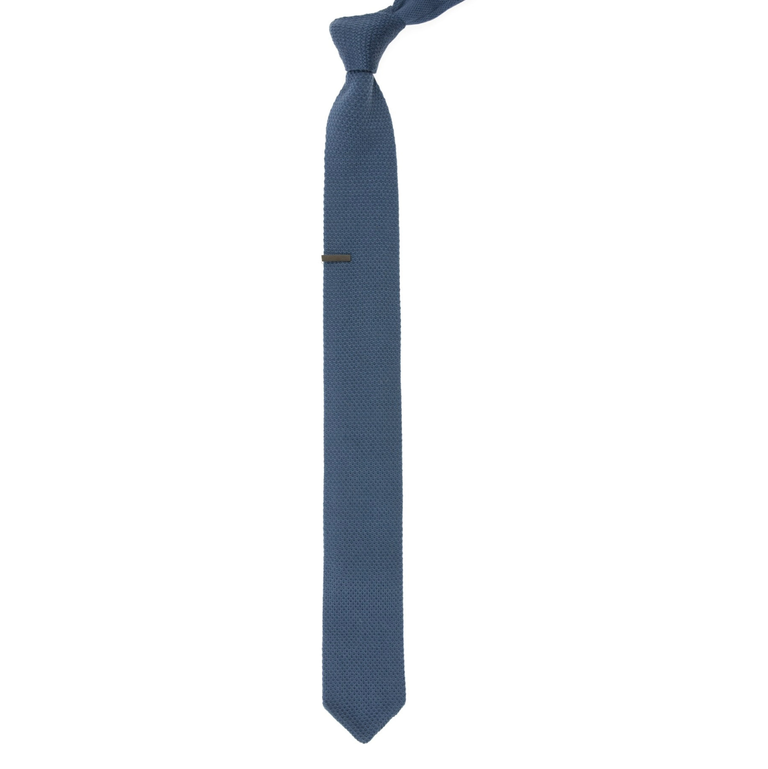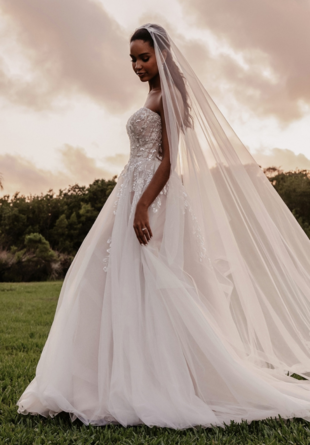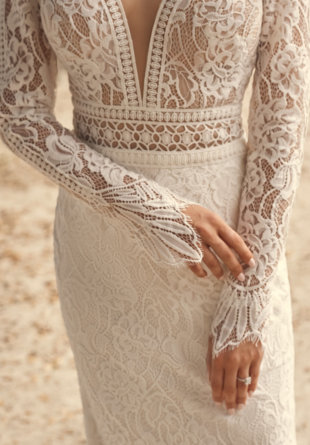Types of Ties and How to Choose the Right One
You've got enough to worry about ahead of planning to tie the knot (or watch a loved one tie it). The last thing you need to stress over is which kind of tie you'll be knotting up on the date. See what I did there? Types of ties are like suits and dress shirts: there tend to be different styles for different occasions and seasons. Whether you're looking to make a bold fashion statement or just make sure you don't show up to a formal wedding in the wrong neckwear, doing your research ahead of time can make a big difference. It can take a wedding outfit from good to great. From short ties to thick ties to ties that don't quite look like ties at all, here's everything you need to pick out the right tie for a wedding.
In this article:
Types of Ties
From variations in length to material, there are numerous different kinds of ties. Finding the best look for you comes down to personal taste and how you're pairing it. Keep reading for a breakdown of the kinds of ties you need to look your best at a wedding.
Four in Hand Tie
What it looks like: Picture a necktie in your head. Got it? Good–what you're picturing is almost certainly a Four in Hand tie. Four in Hand ties are the most common type of tie, the name referring to the number of folds in the fabric used to create the tie. They come in a variety of lengths, widths, and colors and make for one of the most versatile neckties out there.
When to wear it: Any time, save for very specific dress codes like white tie or a casual event that skews away from ties entirely.
How to wear it: However you'd like, though the most common knot with these is a simple Windsor.
Seven Fold Tie
What it looks like: Think of a Seven Fold tie as an elevated Four in Hand tie. They're usually made from a square yard of silk that's folded seven times to create the tie. The result is a standard necktie made from high-quality material that also trends on the slightly wider side.
When to wear it: These are best for more formal events.
How to wear it: With a proper suit–not with separates or a semi-formal look, and tied into a thicker knot.
Bow Tie
What it looks like: Bow ties are–you guessed it–meant to be worn tied into a bow shape.
When to wear it: It depends. There are black bow ties that are designed to be worn to black and white-tie affairs with tuxedos. However, \ess formal bow tie (think ones with prints) are best for semi-formal or cocktail attire weddings. Skip these for any black-tie or black tie optional affairs.
How to wear it: Tied into a bow with a tuxedo or suit separates, depending on the styleof bow tie you're wearing.
Skinny Tie
What it looks like: The name says it all—it's like a Four in Hand tie but skinny.
When to wear it: Skinny ties were popularized in the 60s thanks to bands like The Beatles. The style has been around for decades, but these days, they can actually give a suit a modern, dare I say, fashion-savvy look. A skinny tie can be worn with a regular suit or even a tuxedo (assuming said skinny is black).
How to wear it: Make sure you're pairing this tie with an appropriately proportioned tux or suit. That means skinny lapels and a smaller shirt collar work best. If it's a nice black tie (as in the color black) you can rock it with a tuxedo. If it's a different hue, add it as a finishing touch to a more formal suit or casual fits made of separates. Skinny can be versatile.
Bolo Tie
What it looks like: Bolo ties skew unconventional. They're made of a piece of roped leather held together by a clasp or ring that's usually on the ornamental side.
When to wear it: In terms of dress code your entry point is going to probably be semi-formal. However, bolo ties give a suit a western vibe, so the real sweet spot here is going to be western themed weddings.
How to wear it: You're gonna want to wear a bolo with an appropriate shirt. You can do it with standard dress shirts at times but the real winner is going to be with denim or a chambray shirt.
Knit Tie
What it looks like: Knit ties bear a resemblance to traditional ties but differ in how they're made. Your standard tie is going to feature woven material whereas these feature knitted cottons, linens, silks, and wools (depending on the tie). This gives the tie a textured look and feel rather than a smooth finish. They also tend to feature squared-off bottoms rather than points.
When to wear it: Keep these at home for black tie and white tie weddings.Other than that, knit ties go with just about any dress code.
How to wear it: With a suit or suit separates. Knit ties are deceptively versatile and bring a unique touch to any suit you pair them with.
Ascots and Cravats
What it looks like: Ascots and cravats are similar pieces of neckwear. Both are folds of fabric that you loop loosely around your neck and tuck into an open-collared shirt rather than around the collar.
When to wear it: Cravats are for formal and even white-tie occasions. Ascots are still pretty formal but have a bit more range. You can wear them to a semi-formal wedding when styled right.
How to wear it: Ascots are generally knotted in place whereas cravats (the slightly more formal option) are pinned.
Bandanas
What it looks like: There's a good chance you're already familiar with a classic bandana, which is a square of fabric (usually cotton but sometimes silk or linen blends) popularized by cowboys. They're often patterned rather than solid (as are most ascots and cravats, their closest cousins in the neckwear world).
When to wear it: A bandana isn't going to be right for formal occasions. But they'll look great at western-themed weddings or dressy-casual ones.
How to wear it: First of all, pair these with appropriate suits–think suit separate mixes, denim and/or western shirts, and even the rare wedding fit that includes jeans. Fold it up length-ways and around your neck loosely, positioning the knot facing forward, and tuck it inside of an open-collared shirt.
How To Choose the Right Tie Type For You
Maybe you've got your wedding fit locked in already and maybe you're still in the process of building it from the ground up. Whatever position you may be in, there's a good chance you'll need to consider a tie. Here's everything you need to know about how to pick the right one.
Consider the dress code
The thing about black-tie weddings is they really don't give you much room to budge in the tie department. The more formal the dress code, the more rigid the rules, and they're not ones meant to be broken. If the couple has requested black-tie attire it probably isn't the best time to bust out a knit or bolo tie. It goes both ways, though–a dressy-casual wedding isn't the right place to wear a Seven Fold tie.
Be intentional
Don't just throw on any old tie with your suit. Being deliberate about which one you wear with your wedding fit will elevate the entire look. If you want to wear a cravat or bolo tie, start there and figure out what sort of suit is going to look best with it. And if you already have a great suit picked out, don't wear a bandana just for the sake of wearing one. Put some thought into the suit's vibe and its proportions before making your decision.
You don't always need a tie
Most wedding dress codes politely suggest some sort of neckwear. That said, don't force a tie into an outfit that doesn't need one, or a wedding where they aren't a good fit–you have permission not to wear one if the occasion isn't right. Western and beach weddings don't necessitate neckwear, and dressy-casual weddings are often a suitable time to just go with an open collar. You don't need to wear a tie if the tie is ultimately going to be wearing you.

































